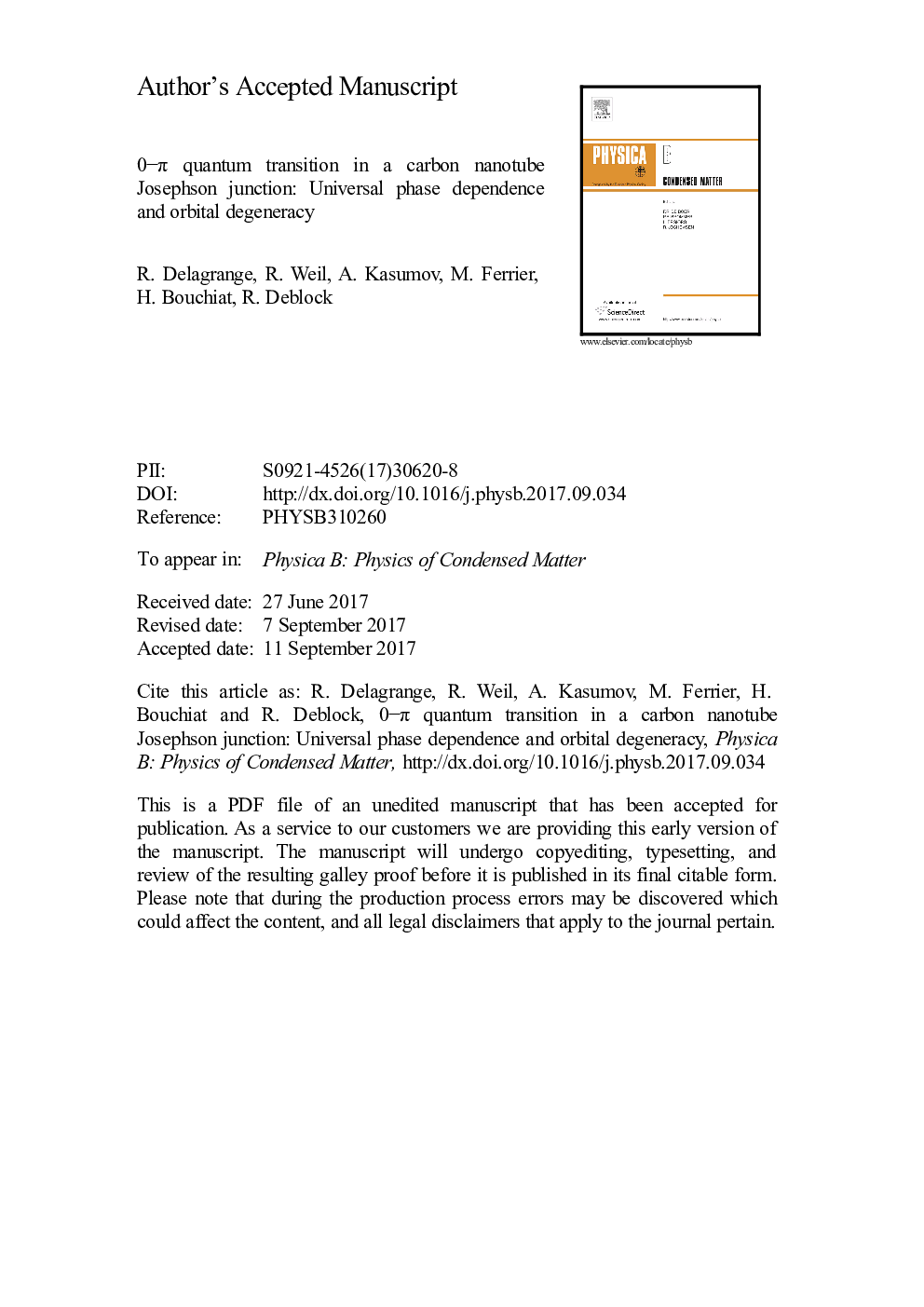| Article ID | Journal | Published Year | Pages | File Type |
|---|---|---|---|---|
| 8161094 | Physica B: Condensed Matter | 2018 | 21 Pages |
Abstract
In a quantum dot hybrid superconducting junction, the behavior of the supercurrent is dominated by Coulomb blockade physics, which determines the magnetic state of the dot. In particular, in a single level quantum dot singly occupied, the sign of the supercurrent can be reversed, giving rise to a Ï-junction. This 0âÏ transition, corresponding to a singlet-doublet transition, is then driven by the gate voltage or by the superconducting phase in the case of strong competition between the superconducting proximity effect and Kondo correlations. In a two-level quantum dot, such as a clean carbon nanotube, 0-Ï transitions exist as well but, because more cotunneling processes are allowed, are not necessarily associated to a magnetic state transition of the dot. In this proceeding, after a review of 0-Ï transitions in Josephson junctions, we present measurements of current-phase relation in a clean carbon nanotube quantum dot, in the single and two-level regimes. In the single level regime, close to orbital degeneracy and in a regime of strong competition between local electronic correlations and superconducting proximity effect, we find that the phase diagram of the phase-dependent transition is a universal characteristic of a discontinuous level-crossing quantum transition at zero temperature. In the case where the two levels are involved, the nanotube Josephson current exhibits a continuous 0âÏ transition, independent of the superconducting phase, revealing a different physical mechanism of the transition.
Related Topics
Physical Sciences and Engineering
Physics and Astronomy
Condensed Matter Physics
Authors
R. Delagrange, R. Weil, A. Kasumov, M. Ferrier, H. Bouchiat, R. Deblock,
